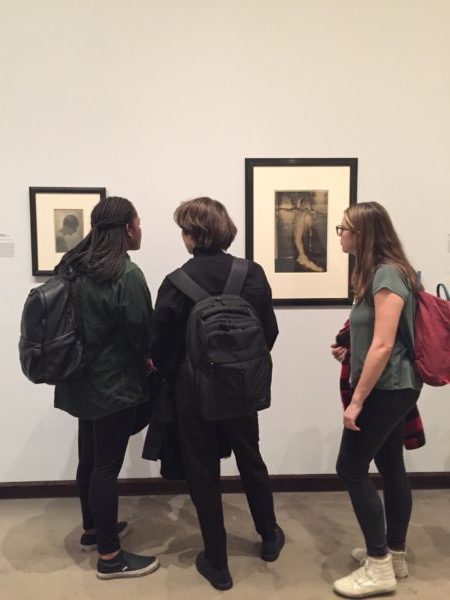Heavenly Bodies: Fashion and the Catholic Imagination, recently on view at the Metropolitan Museum of Art, exposes a not-so-obvious though imminently pertinent relationship between fashion and Catholicism. Sponsored by Condé Nast and Versace, it is the Costume Institute’s largest and most visited exhibit to date.
The exhibit was divided between the Met Fifth Avenue and the Met Cloisters. Though I was unable to make the pilgrimage uptown to the Cloisters, I followed the Met Fifth Avenue exhibition through the Byzantine galleries, the Medieval Europe galleries, the Medieval Sculptural Hall and into the Medieval Treasury. It then continued into a part of the Robert Lehman Wing and, of course, into the Anna Wintour Costume Center, where mantles, chasubles, and papal tiaras were on loan from the Vatican.

Approaching the staircase from the Great Hall, you could catch a glimpse of mannequins on either side perched above eye-level. As you followed the sparkle emanating from the dresses, you would then find yourself in the Byzantine galleries. Here, the mannequins were positioned in single-file, deliberately recalling the order of a liturgical procession—or of a fashion show—or both?— withVersace down one corridor, Dolce & Gabbana down the other. The dresses emulated the Byzantine church art surrounding them in the gallery. For instance, the sequins individually placed on the Dolce & Gabbana dresses intentionally evoked the traditional distinctive pattern of tiles or tesserae of Byzantine mosaics.

The Medieval Sculpture Hall held the central and most theatrical section of the exhibit. The space, modeled after the floor plan of a Cathedral, complete with a nave and two side aisles, was particularly resonant. Mannequins again lined up in procession formation in the centre of each of these areas. As you entered this sanctuary, you would find yourself immediately attuned to the eerie echo of chanting that resonated throughout what could be imagined as an ancient stone chapel. The mannequins’ closed eyes gave them a meditative, almost trance-like look, which contributed to the austere yet seemingly enchanted ambiance of the space. The theme of ecclesiastical and celestial hierarchies was explored through the relationships between the Medieval paintings and sculptures and the designs by the likes of Valentino and Christian Lacroix.
To a certain extent, by temporarily placing the outfits and accessories in the middle of galleries that house permanent collections of art, such as the mosaic depicting the personification of Ktisis (c. 500-550) in the Byzantine gallery, the exhibit emphasised the ephemerality of fashion. The fact that, at the end of Heavenly Bodies, the ensembles were removed from within these galleries gives credence to the argument that fashion in short-lived and therefore should not belong in an art museum among works of art that transcend time.

Given the growing popularity of fashion exhibits, especially amongst a younger crowd that does not usually flood the halls of staid museums, Heavenly Bodies has not just contributed to making fashion relevant to contemporary times: it has also contributed to a broader, established and more sophisticated discourse—going so far as to bring Catholic imagery and fashion together in the same dialogue.
















